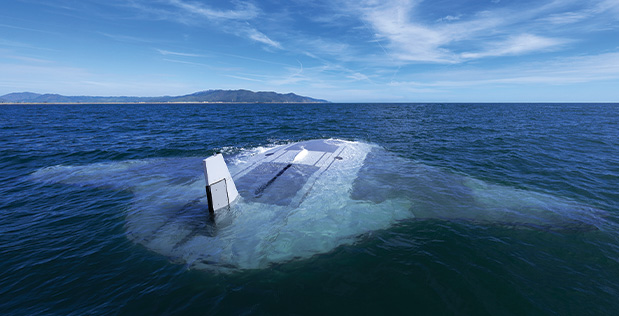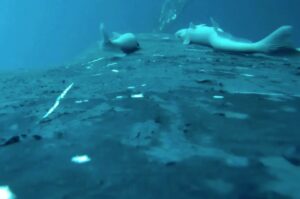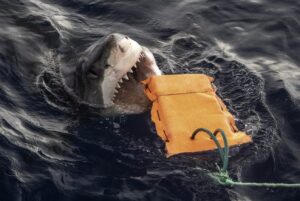If drone warfare or dancing robots aren’t already scary enough, how about submarine drone warfare?
The United States and Australia are testing two unmanned underwater vehicles (UUVs) alongside their countries’ navies. Prototypes of the two colorfully named submersible drones — Manta Ray (U.S.) and Ghost Shark (Australia) — are already active. Soon, fleets of such vehicles may patrol international waters for military purposes.
Details on the mysterious drones are few. But the Manta Ray’s developer, Northrop Grumman, says its modular design allows it to be transported in a shipping container and assembled on site. Defense tech firm Anduril Australia claims it delivered the $140 million Ghost Shark ahead of schedule, just two years after the project began.
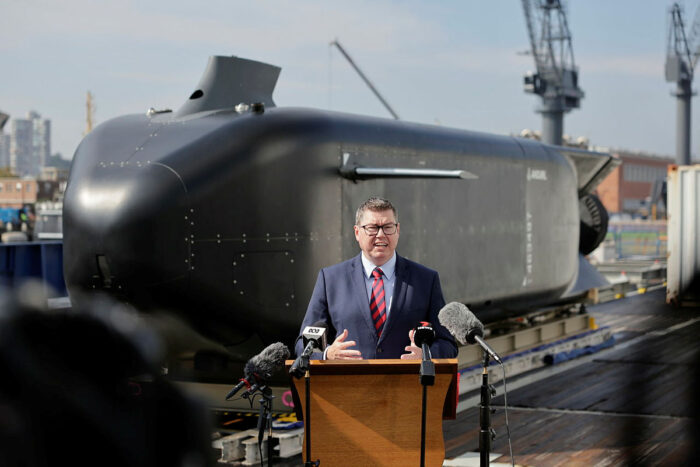
Australian Defense Minister Pat Conroy speaks at the unveiling of the Ghost Shark. Photo: Rodney Braithwaite/Australian Defense Ministry
Underwater drones face challenges surface or air-based units do not. Significant data signal loss occurs underwater because of temperature, salinity, and depth. The Manta Ray’s propulsion systems underwent testing off Southern California during February and March.
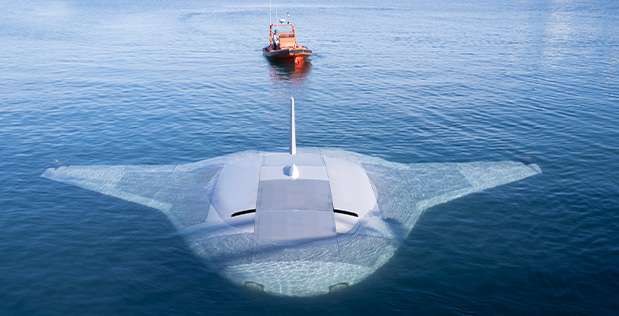
Being tugged out for testing. Photo: Northrop Grumman
Civilian counterparts?
“Our successful, full-scale Manta Ray testing validates the vehicle’s readiness to advance toward real-world operations,” Dr. Kyle Woerner, DARPA program manager for Manta Ray, said in a statement.
Beyond more military testing, there is no mention of civilian components of either project. But it’s not hard to imagine tiny, private drones photographing underwater reefs, wrecks, and wildlife the way their aerial counterparts do.
Two years ago, the U.S. began developing the Orca, a 26-meter-long UUV designed to perform “long-range critical missions.” But the Boeing project got underway long after China began building a similar vehicle, an expert told CNN.
“While details are scarce, as with most Chinese capabilities, they have been developing them for at least 15 years and likely now have something similar to the Orca (but with torpedoes) in the testing phase,” said Emma Salisbury, a fellow at the British think tank Council on Geostrategy.
